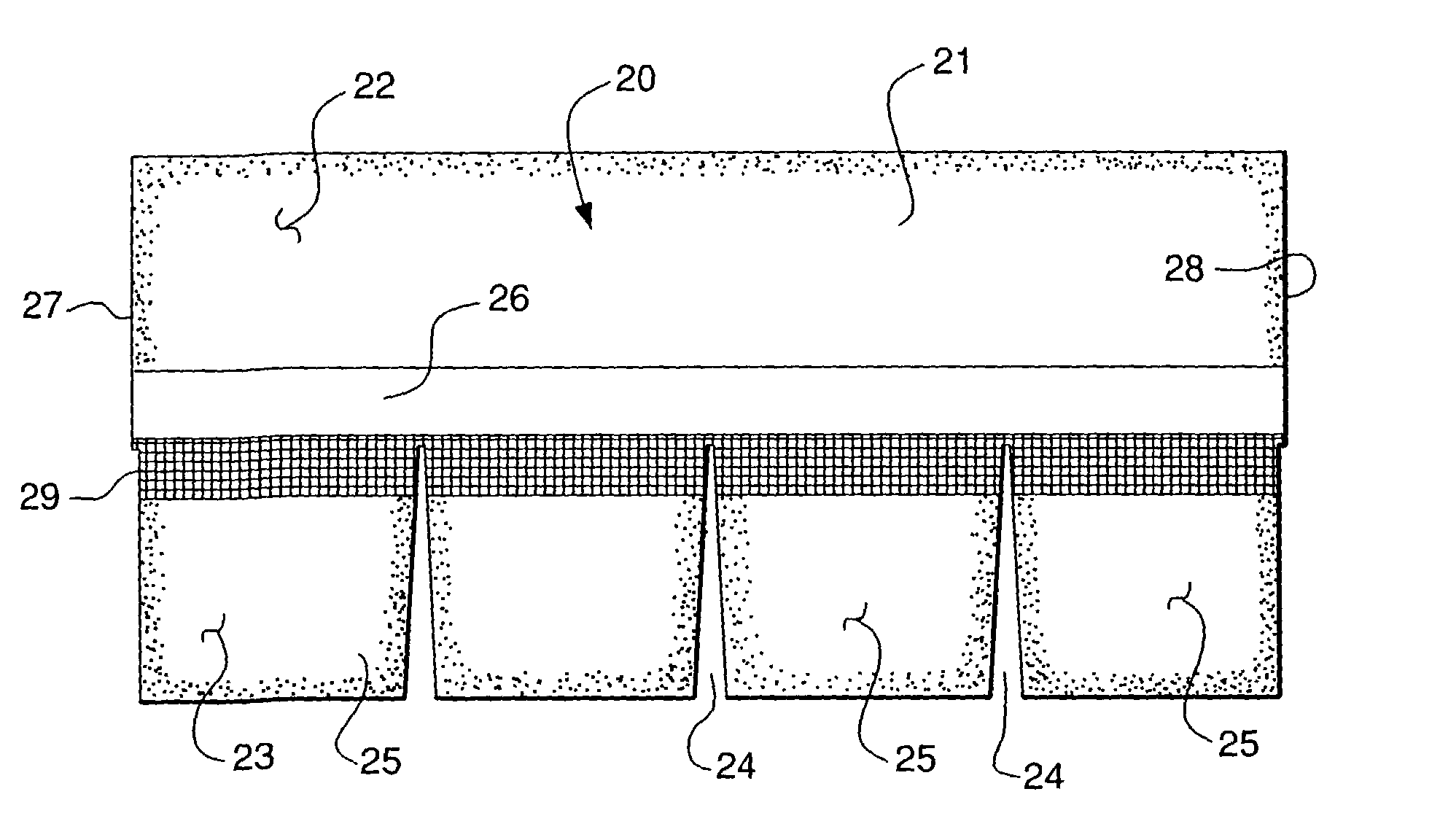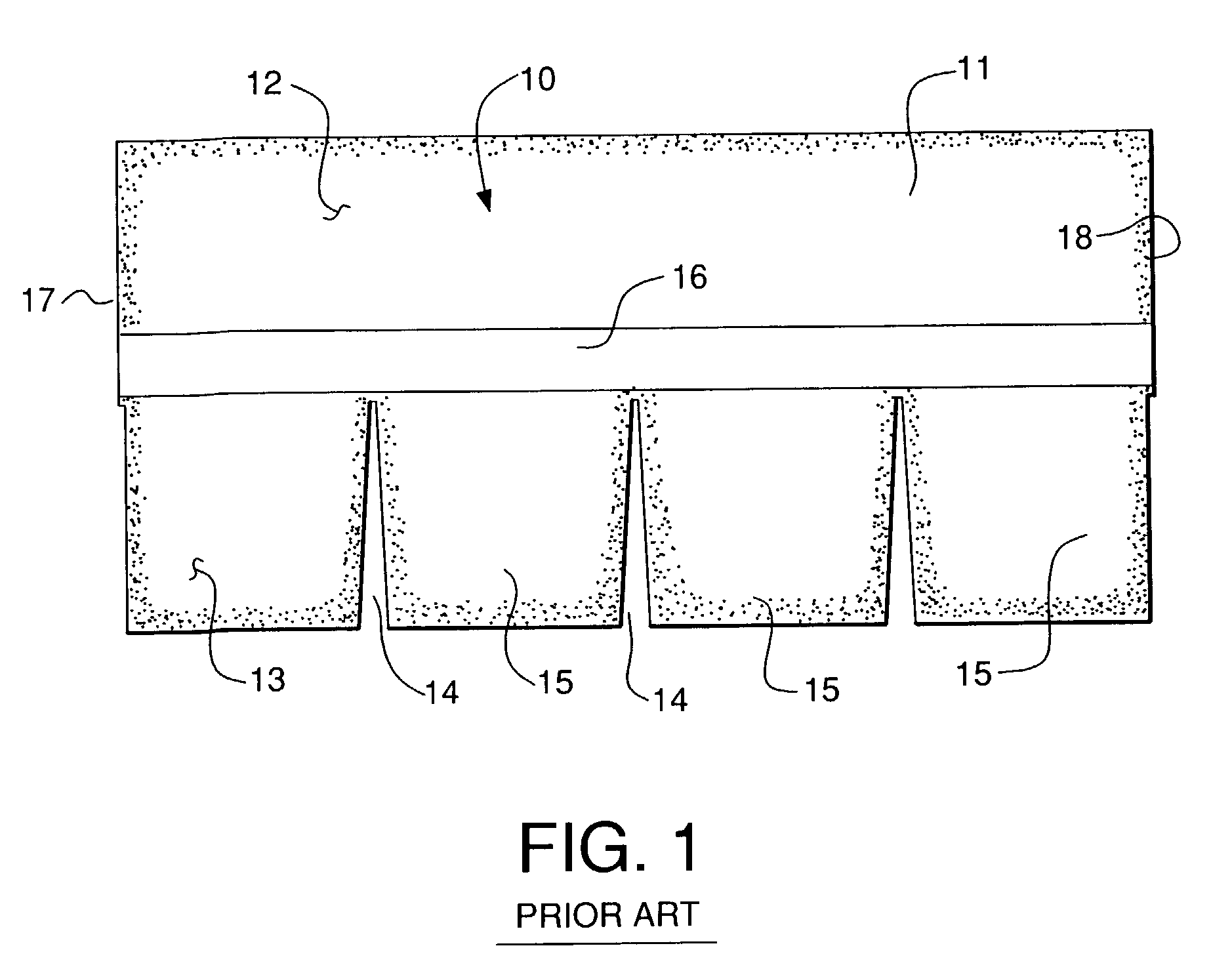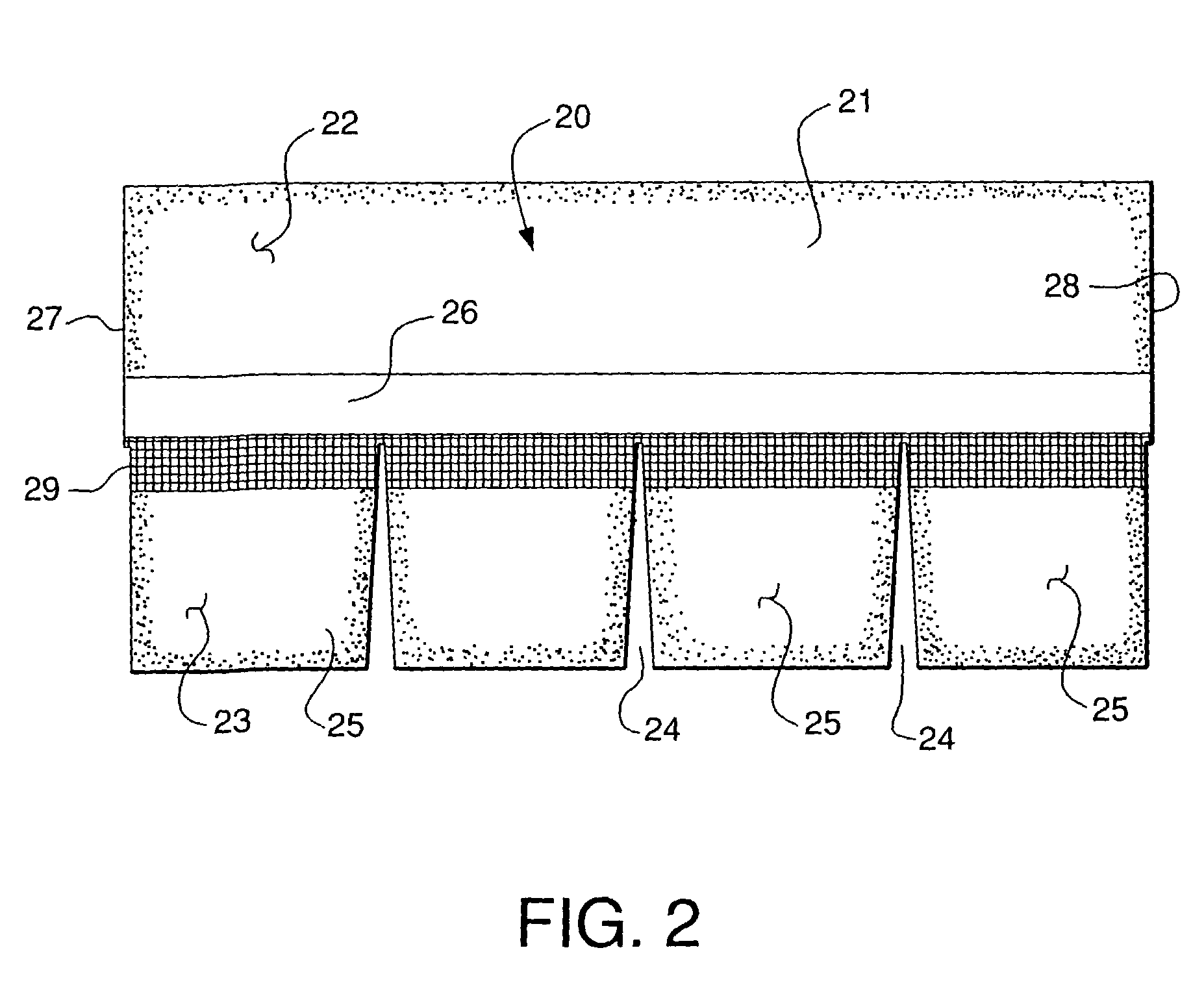Shingle with improved blow-off resistance
a technology of shingle and insulating layer, which is applied in the direction of building repairs, transportation and packaging, chemistry apparatus and processes, etc., can solve the problems of shingle failure, internal shingle formation, and insufficient asphaltic material on the surface of the shingle,
- Summary
- Abstract
- Description
- Claims
- Application Information
AI Technical Summary
Problems solved by technology
Method used
Image
Examples
Embodiment Construction
[0021] Referring now to the drawings in detail, reference is first made to FIG. 1, wherein a prior art shingle is illustrated as comprising a shingle generally designated by the numeral 10, constructed as a mat of preferably fiberglass mesh, having asphalt, or some other form of bitumen material impregnated therein, and forming layers on each surface thereof, with a granular material on each exposed surface. On the upper exposed surface, will be granules of a size desired to resist sun and other weather conditions, and on the opposite, or undersurface 11, there will be preferably smaller granules of a mica or like material, for example. The shingle 10 has a headlap portion 12 and a tab portion 13, having slotted openings 14 dividing the tab portion 13 into a number of discrete tabs 15. On the undersurface 11 there is provided preferably a sheet of release paper or tape 16, which is removed when the shingle is installed on a roof, but which, for stacking shingles for shipment prevent...
PUM
| Property | Measurement | Unit |
|---|---|---|
| width | aaaaa | aaaaa |
| width | aaaaa | aaaaa |
| weight | aaaaa | aaaaa |
Abstract
Description
Claims
Application Information
 Login to View More
Login to View More - R&D
- Intellectual Property
- Life Sciences
- Materials
- Tech Scout
- Unparalleled Data Quality
- Higher Quality Content
- 60% Fewer Hallucinations
Browse by: Latest US Patents, China's latest patents, Technical Efficacy Thesaurus, Application Domain, Technology Topic, Popular Technical Reports.
© 2025 PatSnap. All rights reserved.Legal|Privacy policy|Modern Slavery Act Transparency Statement|Sitemap|About US| Contact US: help@patsnap.com



